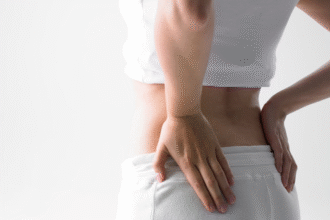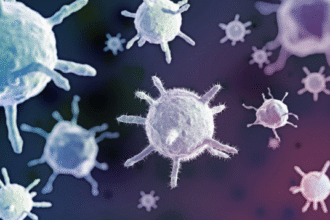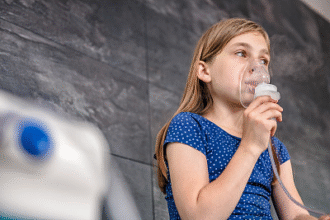Nursing Care for Cholelithiasis: Assessment, Interventions, and Education
Cholelithiasis (gallstones) affects up to 20% of adults in developed countries. Gallstones may remain asymptomatic or trigger biliary colic, acute cholecystitis, and complications such as cholangitis and pancreatitis. Comprehensive nursing care—encompassing assessment, pre- and postoperative interventions, patient education, and follow-up—supports optimal recovery and reduces morbidity.
- 1. Introduction and Pathophysiology
- 2. Nursing Assessment
- 3. Preoperative Nursing Interventions
- 4. Postoperative Nursing Interventions
- 4.1 Pain Management
- 4.2 Respiratory Care
- 4.3 Gastrointestinal and Nutritional Support
- 4.4 Mobility and Activity
- 4.5 Monitoring and Complication Prevention
- 5. Patient Education and Discharge Planning
- 6. Special Considerations
- References
1. Introduction and Pathophysiology
- Gallstones form when bile becomes supersaturated with cholesterol or bilirubin, leading to crystal precipitation and stone formation.
- Common risk factors: the “Four Fs” (female, forty, fertile, fat), rapid weight loss, prolonged fasting, hemolytic disorders, and chronic inflammation.
- Clinical manifestations range from silent stones to severe right upper quadrant pain, fever, and jaundice.
2. Nursing Assessment
2.1 Subjective Data
- Pain: onset, location (RUQ/epigastric), radiation, intensity, duration, relieving/exacerbating factors.
- Gastrointestinal symptoms: nausea, vomiting, bloating, dyspepsia.
- Past medical history: prior episodes, comorbidities (liver disease, hemolysis).
- Dietary and lifestyle patterns: high-fat intake, rapid weight changes.
2.2 Objective Data
- Vital signs: fever, tachycardia, hypotension (signs of infection or obstruction).
- Physical exam: Murphy’s sign, abdominal tenderness, guarding.
- Laboratory results: elevated WBC count, bilirubin, liver enzymes, amylase/lipase (if pancreatitis).
- Imaging: ultrasound findings (stones, gallbladder wall thickening, duct dilation).
3. Preoperative Nursing Interventions
- Provide emotional support: explain diagnosis, treatment plan (laparoscopic vs. open cholecystectomy), and expected outcomes.
- Fasting and fluid management: enforce NPO status per protocol; administer IV fluids and electrolytes to maintain hydration.
- Nutritional optimization: encourage small, low-fat meals before surgery; assess nutritional status.
- Medication review: withhold anticoagulants as ordered; administer vitamin K if coagulopathy present.
- Baseline documentation: record intake/output, urine output, pain score, and vital signs.
4. Postoperative Nursing Interventions
4.1 Pain Management
- Assess pain using a standardized scale; administer analgesics (opioid or NSAID) and instruct on PCA use if applicable.
- Encourage nonpharmacologic methods: positioning, relaxation techniques, cold packs.
4.2 Respiratory Care
- Encourage deep breathing, incentive spirometry, and early ambulation to prevent atelectasis and pneumonia.
4.3 Gastrointestinal and Nutritional Support
- Advance diet as tolerated: clear liquids → full liquids → low-fat soft diet → regular diet.
- Monitor bowel sounds, abdominal distension, and signs of ileus.
- Maintain T-tube or surgical drain patency: measure and record drainage characteristics; protect skin at insertion site.
4.4 Mobility and Activity
- Assist early ambulation within 4–8 hours post-surgery to reduce risk of DVT and promote GI motility.
- Provide compression stockings or sequential compression devices as ordered.
4.5 Monitoring and Complication Prevention
- Vital signs: q4h for the first 24 hours, then per protocol.
- Observe for surgical site infection: redness, swelling, drainage.
- Monitor for signs of bile leak or pancreatitis: increasing abdominal pain, elevated amylase.
- Assess fluid balance: hourly urine output initially, then q shift.
5. Patient Education and Discharge Planning
- Dietary Modifications: adopt a low-fat diet post-discharge; eat small, frequent meals; avoid high-cholesterol foods.
- Wound Care: keep incision site clean and dry; recognize signs of infection.
- Activity Guidelines: avoid heavy lifting (>10 pounds) for 4–6 weeks; gradually resume normal activities.
- Medication Adherence: complete prescribed antibiotics, analgesics, and bile acid supplements (if indicated).
- Complication Signs: teach to report fever, increasing pain, persistent nausea/vomiting, jaundice, or changes in stool/urine color.
- Follow-Up: schedule outpatient surgical and primary care appointments; remove T-tube per surgical plan.
6. Special Considerations
- High-Risk Patients: adjust care for elderly, immunosuppressed, or comorbid patients (e.g., diabetes, cardiovascular disease).
- Patient-Centered Communication: involve family in education, use teach-back method to confirm understanding.
References
- Working Party of the British Society of Gastroenterology. Guidelines on the management of cholelithiasis. Gut. 2018.
- Strasberg SM. Clinical practice of laparoscopic cholecystectomy. Ann Surg. 2020.
- SAGES Guidelines for laparoscopic gallbladder removal. Surg Endosc. 2019.







